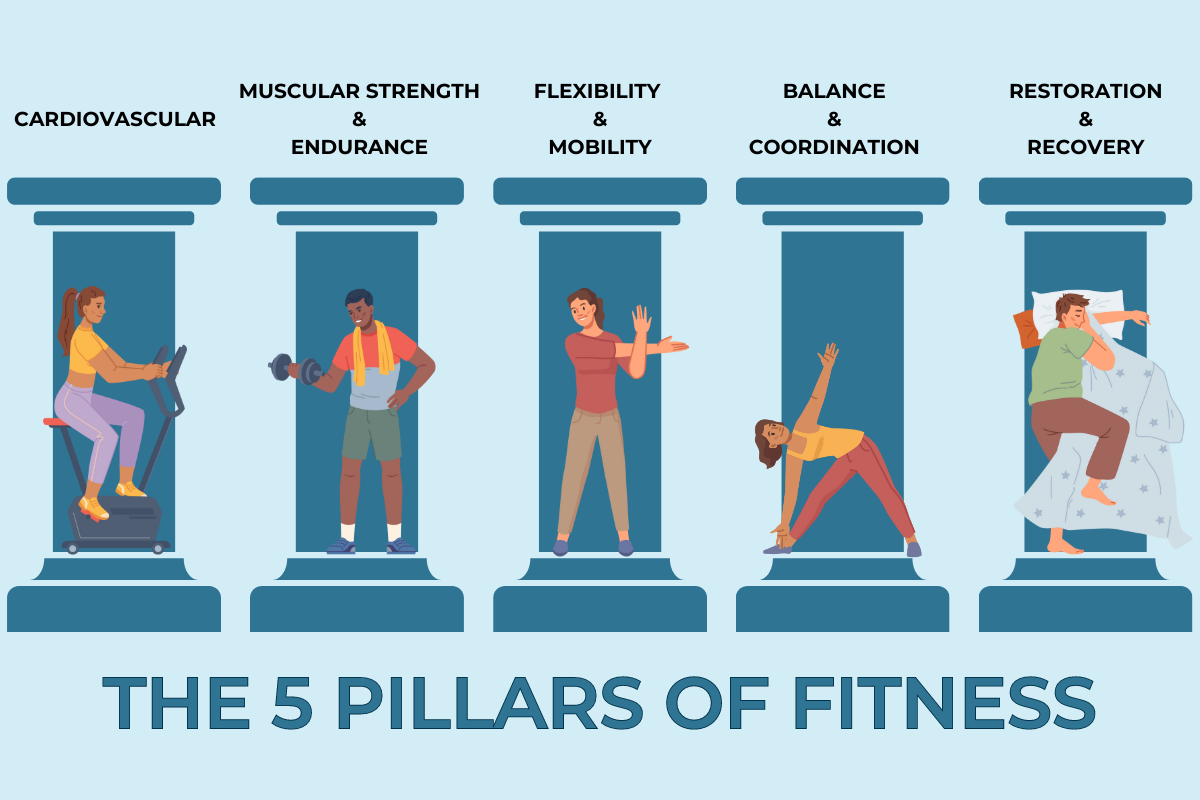Maybe you have been training for a long time, you had the beach body, could play multiple sports with relative ease, and you had energy to spare. Then maybe you settled down into a relationship, focused on your career, perhaps, started a family, and your fitness fell out of focus. On the other hand, perhaps you were never really that active and coasted through life without putting much effort into your health, got through your 20’s no problem, drifted through your 30’s, then suddenly started falling apart in your 40’s. No matter what your story, eventually we all must face the inevitability of aging.
Investing in your health
Our body is like an investment savings account. If we start early and keep adding to it, over time we will reap the rewards of our efforts. If we don’t keep putting funds into it, or even worse, start dipping into it without topping it up, then we end up with a low return on investment. When it comes to investing your fitness, eventually you come to realize you need to play the long game. The fitness long game involves regular consideration of these major components…
- Cardiovascular fitness
- Muscular Strength and Endurance
- Flexibility and Mobility
- Balance and Coordination
- Restoration and Recovery
Cardiovascular Fitness
Cardiovascular Fitness recommendations as per the American College of Sports Medicine (ACSM) are that “All healthy adults should participate in moderate intensity aerobic physical activity for a minimum of 30 minutes on five days per week (150 minutes per week), or vigorous intensity aerobic activity for a minimum of 20 minutes on three days per week”. Doing so has been shown to significantly reduce our risk for heart disease, high blood pressure, high cholesterol, type 2 diabetes, and other chronic diseases. Make regular cardiovascular exercise something you enjoy and can do readily and frequently to ensure you don’t short change your fitness account from this crucial asset.
Muscular Strength and Endurance
More and more, improving muscular strength and endurance through proper resistance training is being recognized as a crucial factor in longevity, quality of life and functionality as we age. It makes total sense, if you allow yourself to get weaker, especially in areas such as your legs and trunk (core), then you are less inclined to get out and participate in regular activities that keep your vitality. This spiraling fitness trend is one of the leading mechanisms by which we see significant declines with age, making us prone to frailty, injury and even fatality. In order to prevent this, ACSM recommends “Every adult should perform activities that maintain or increase muscular strength and endurance for a minimum of two days per week”. Although this is a very broad statement indeed, we recommend working major muscle groups twice a week with a focus on the lower body and core which contribute the most to locomotion and our ability to keep moving.
Flexibility and Mobility
Flexibility and Mobility are commonly considered the least sexy part of fitness training. However, failure to invest in these fitness components will eventually hinder the ability to keep up the cardio and/or strength/endurance pieces, and increases the risk of injury. As a young exerciser i.e. 20’s, maybe 30’s we could get away without stretching muscles, or worrying about joint mobilization, however, past this point soft tissue (muscles, ligaments, tendons, fascia etc.) begin to dry out, tighten and get inflamed leading to all kinds of dysfunction. ACSM recommends performing flexibility exercises two or three days a week. At least four repetitions per muscle group should be completed at each session, and in order to keep the tendons and muscles mobile, it is recommended to stretch each muscle group for at least 60 seconds. This can be accumulated into sets of 10-30 seconds at a time or all at once. While stretching, a mild discomfort may occur, but sharp or intense pain should be avoided. Keep in mind also that proper resistance training through increased ranges of motion also helps to maintain and improve mobility!
Balance and Coordination
Potentially even less sexy but also utterly essential to longevity, is balance and coordination or neuromotor training. ACSM recommends performing neuromotor exercises involving balance, agility, coordination, and gait at least 2 to 3 days/wk. Although the optimal duration and number of repetitions of these exercises is not known at this time, 20 to 30 min of neuromotor exercise per day is suggested. All it can take is one bad fall to start a catastrophic downturn in someone’s fitness journey, and in turn their health. Neuromotor training can be easily built into your everyday activities and strength program and should never be taken for granted or overlooked, especially for older adults (65+). Workouts that favor bodyweight and free weights tend to be more transferable to better neuromotor fitness.
Restoration and Recovery
The final component can be really easy for some and especially difficult for others. For the avid exerciser, sometimes taking a break or slowing down can be a very difficult thing. As we start to see the benefits of regular exercise in our life (more energy, feeling more capable, better performance, better aesthetics, mental health boost etc.) it can become addictive and hard to stop. However, overtraining can lead to adverse behavioral and physiological effects that can be detrimental to someone’s mental and physical health. Getting adequate age-dependent sleep and gaining self-awareness on how our body feels from regular training and the activities of daily life are vital to assessing whether we are doing more good than harm. Wearable technology like step and sleep trackers can give useful feedback as to whether we are getting proper rest and recovery so we can make progress. Sleep hygiene (controlling factors to ensure consistent, uninterrupted sleep) is also a very important consideration when it comes to sleep quality and overall recovery.

There you have it! This is intentionally meant to be a broad snapshot of the key components of training for longevity. There is a lot more to consider when it comes to tailoring a program to you in order to optimize your longevity. We encourage you to make use of all of your Preventous team members to help develop a long-term plan for you that addresses all of the main pillars of health. Lastly, we want to emphasize that it is absolutely never too late to make a positive impact on your health and therefore longevity.
Make a great decision today to change your quality of life tomorrow!
Colin Davis B.Sc., CSEP-CPT
Krystyna Woodson MKin,
B.Sc. Kin, CSEP-CEP, CPT

